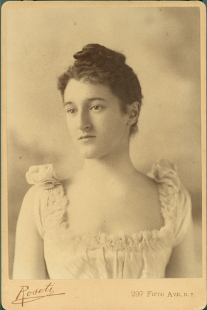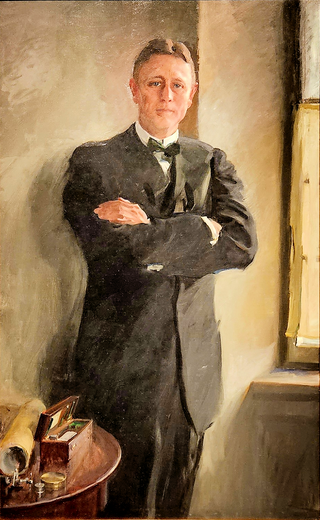Related Research Articles

Beatrix Cadwalader Farrand was an American landscape gardener and landscape architect. Her career included commissions to design about 110 gardens for private residences, estates and country homes, public parks, botanic gardens, college campuses, and the White House. Only a few of her major works survive: Dumbarton Oaks in Washington, D.C., the Abby Aldrich Rockefeller Garden on Mount Desert, Maine, the restored Farm House Garden in Bar Harbor, the Peggy Rockefeller Rose Garden at the New York Botanical Garden, and elements of the campuses of Princeton, Yale, and Occidental.

Landscape architecture is the design of outdoor areas, landmarks, and structures to achieve environmental, social-behavioural, or aesthetic outcomes. It involves the systematic design and general engineering of various structures for construction and human use, investigation of existing social, ecological, and soil conditions and processes in the landscape, and the design of other interventions that will produce desired outcomes.

A landscape architect is a person who is educated in the field of landscape architecture. The practice of landscape architecture includes: site analysis, site inventory, site planning, land planning, planting design, grading, storm water management, sustainable design, construction specification, and ensuring that all plans meet the current building codes and local and federal ordinances.

Dumbarton Oaks, formally the Dumbarton Oaks Research Library and Collection, is a historic estate in the Georgetown neighborhood of Washington, D.C. It was the residence and garden of wealthy U.S. diplomat Robert Woods Bliss and his wife Mildred Barnes Bliss. The estate was founded by the Bliss couple, who gave the property to Harvard University in 1940. In 1944, it was the site of the Dumbarton Oaks Conference to plan for the post-WWII United Nations.

Charles Adams Platt was an American architect, garden designer, and artist of the "American Renaissance" movement. His garden designs complemented his domestic architecture.

The Reeves-Reed Arboretum is a nonprofit arboretum and garden located at 165 Hobart Avenue in Summit, Union County, New Jersey, United States. It is the only arboretum in Union County. A popular wedding spot, the arboretum grounds are open daily from dawn till dusk, free of charge.

Max Farrand was an American historian who taught at several universities and was the first director of the Huntington Library.

Ellen Biddle Shipman was an American landscape architect known for her formal gardens and lush planting style. Along with Beatrix Farrand and Marian Cruger Coffin, she dictated the style of the time and strongly influenced landscape design as a member of the first generation to break into the largely male occupation.

Warren Henry Manning was an American landscape designer and promoter of the informal and naturalistic "wild garden" approach to garden design. In his designs, Manning emphasized pre-existing flora through a process of selective pruning to create a "spatial structure and character." An advocate for the conservation of the American landscape, Manning was a key figure in the formation of the American Society of Landscape Architects and a proponent of the National Park System.

Hill–Stead Museum is a Colonial Revival house and art museum set on a large estate at 35 Mountain Road in Farmington, Connecticut. It is best known for its French Impressionist masterpieces, architecture, and stately grounds. The property was designated a National Historic Landmark as a nationally significant example of Colonial Revival architecture, built in 1901 to designs that were the result of a unique collaboration between Theodate Pope Riddle, one of the United States' first female architects, and the renowned firm of McKim, Mead & White. The house was built for Riddle's father, Alfred Atmore Pope, and the art collection it houses was collected by Pope and Riddle.

Charles Wellford Leavitt (1871–1928) was an American landscape architect, urban planner, and civil engineer who designed everything from elaborate gardens on Long Island, New York and New Jersey estates to federal parks in Cuba, hotels in Puerto Rico, plans of towns in Florida, New York and elsewhere. New York publisher Julius David Stern called Leavitt "a rare combination of engineer, artist, and diplomat", and the multi-faceted career chosen by Leavitt, veering between public and private commissions and embracing everything from hard-edged engineering to sensuous garden design, and calling for negotiations with everyone from wealthy entrepreneurs to county commissioners, called for an individual with singular talents. Leavitt was one of the preeminent landscape architects of his era and helped found the study of landscape architecture at New York City's Columbia University, where he was one of the first three professors in the university's new four-year program in the discipline.
Reef Point Estate was located in Bar Harbor, Maine, United States, on Mount Desert Island. Reef Point was the coastal “cottage” of Mary Cadwalder Rawle and Frederic Rhinelander Jones, the parents of landscape architect, Beatrix Farrand (1872–1959). It stood beside Bar Harbor's Shore Path.

Tregaron Estate, formerly known as The Causeway, is a country house and estate located in the Cleveland Park neighborhood of Northwest, Washington, D.C. The estate, built in 1912, was designed by architect Charles Adams Platt and landscape architect Ellen Biddle Shipman. The original owners, Alice and James Parmelee, lived at the estate from the time of its construction until 1940. From 1942 to 1958, it was occupied by Joseph E. Davies, who had served as United States ambassador to several countries, and his second wife, Post Cereal Company heiress Marjorie Merriweather Post. Today the estate is occupied by a campus of the Washington International School and the Tregaron Conservancy.
The Archives of American Gardens is an archive dedicated to preserving documentation and content related to gardens in the United States. Established in 1992, the Archives are located in Washington, D.C., United States, and are maintained by Smithsonian Gardens, a unit of the Smithsonian Institution.

Marian Cruger Coffin was an American landscape architect who became famous for designing numerous gardens for members of the East Coast elite. As a child, she received almost no formal education but was home-tutored while living with her maternal relatives in upstate New York. Coffin was determined to embark on a career despite the social problems that it would cause for a woman of her class and enrolled at the Massachusetts Institute of Technology, where she studied between 1901–4 as one of only four women in architecture and landscape design.

Mary Rutherfurd Jay (1872–1953) was one of America's earliest landscape architects and an advocate of horticultural education and careers for women. The great-great granddaughter of American Founding Father John Jay, she grew up in Rye, New York surrounded by the gardens of her ancestral homestead at the Jay Estate in Westchester County overlooking Long Island Sound. Her education was fostered by travel abroad with her mother and domestically through classes in design and horticulture taken at the Massachusetts Institute of Technology (MIT) and the Bussey Institute in Forest Hills, Massachusetts.
Gertrude Kuh (1893–1977) was an American landscape architect who worked primarily in the Chicago area.
Elizabeth Blodget Lord (1887–1974) was a founding partner of Lord & Schryver, the first female owned and operated landscape architecture firm in the Pacific Northwest from 1929 to 1969.
Edith Eleanor Schryver (1901–1984) was a founding partner of Lord & Schryver, the first female owned and operated landscape architecture firm in the Pacific Northwest from 1929 to 1969.
References
- ↑ Mozingo, Louise A.; Jewell, Linda (2011). Women in Landscape Architecture: Essays on History and Practice. Jefferson, NC: McFarland. p. 39. ISBN 978-0-7864-6164-6.
- 1 2 "The Country Place Era in American Garden Design".
- ↑ "North Shore News in Brief". Salem News. Retrieved 2021-06-08.
- ↑ Iris Gestram (1997). "The Historic Landscape at Gilbraltar – A Proposal for Its Preservation".[ permanent dead link ] (Masters thesis, University of Delaware)
- ↑ Tankard, Judith B. (2018). Ellen Shipman and the American Garden. Athens, GA: University of Georgia Press. p. 29. ISBN 978-0-8203-5208-4.